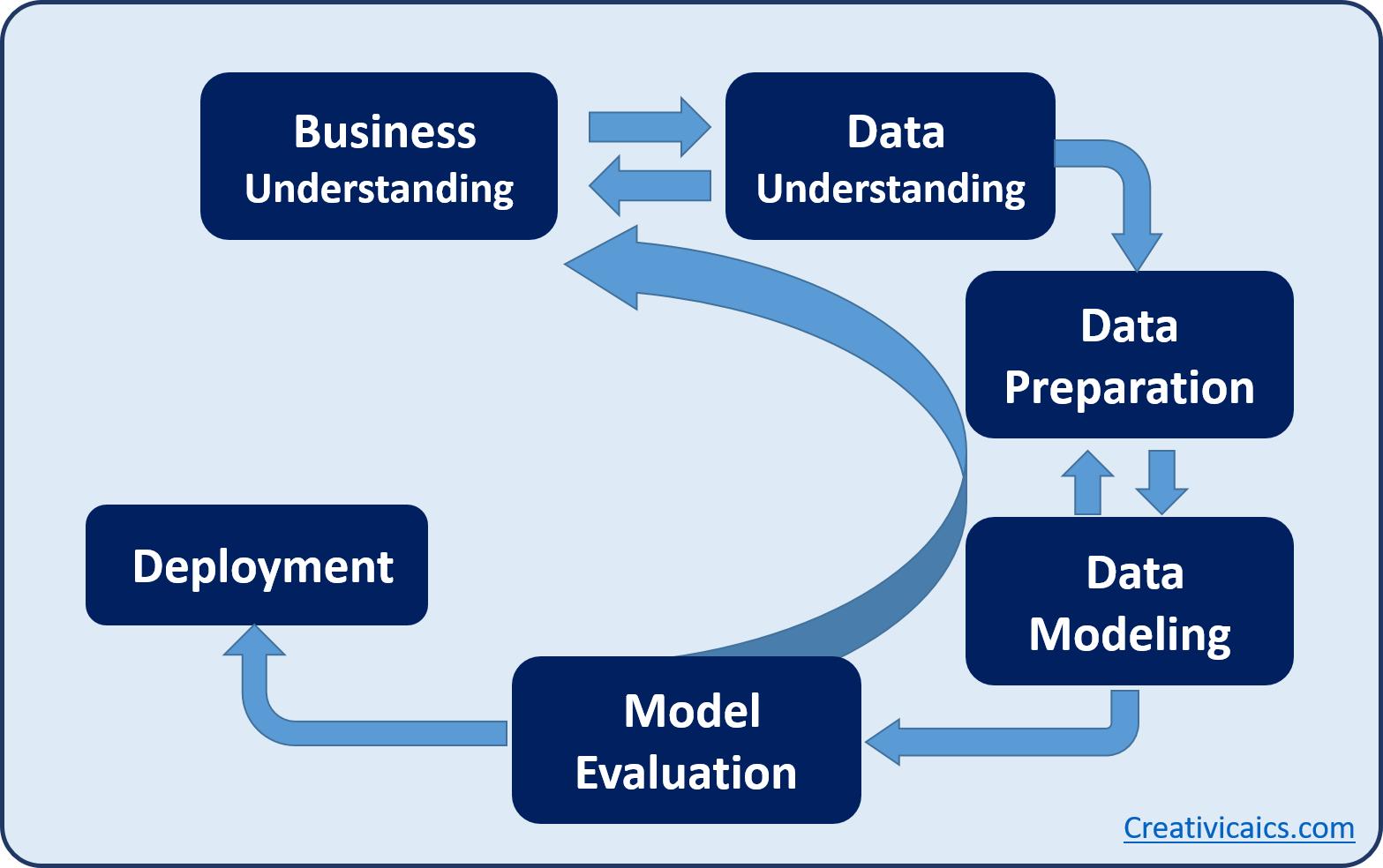

- Business Understanding: This step is to understand what you want to accomplish from a business/project perspective
- Data Understanding: get familiar with data to discover first insights or detect interesting subsets to form hypotheses for hidden information.
- Data Preparation: identify data quality problems, perform data cleaning and tranformations.
- Data Modeling: Inferring the set of rules that helps us understand the intrinsic relationships of the data to come up with insights. A lot of modeling and machine learning is involved in this step.
- Model Evaluation: Selecting the model that performs best on unseen datasets. All key business issues set by the customer must be fulfilled by this selection.
- Deployment: Delivery of the final model.


- Improved Decision Making: It helps businesses make insightful, well-informed, data-driven decisions, which increase efficiency and productivity.
- Enhanced Customer Experience: Having useful insights into customer behavior, preferences, and needs enable businesses to identify areas where they can improve their customer experience.
- Improved Risk Management: Data Analytics tools can spot patterns and correlations in data from various sources that point to potential risks.
- Competitive Advantage: understanding market trends, consumer behavior, and competitor activities, businesses can improve their strategies, spot new opportunities, and stay ahead of their competitors.
Would you like Creativa builds your next AI-Powered solution?
Creativa Intelligent Computing Systems will be happy to help you implement the AI solution that will grow your business and save you money.
